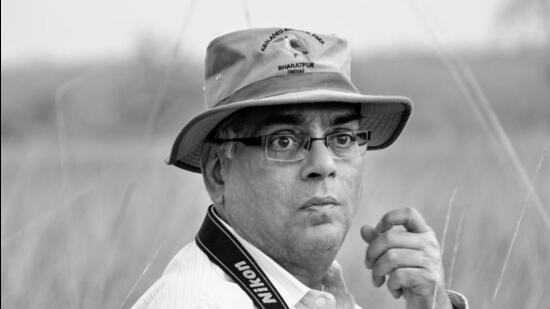‘If you do want to invest in a house, head for the hills’
As Mumbai experienced incessant rain through this month, Goenka looked back at the first deluge the city experienced in its recent history, and spoke to HT about what lies ahead
MUMBAI: Debi Goenka started his career in environmentalism as a volunteer with the WWF and BNHS in 1974. In later years, he worked with WWF-India and was elected to the Executive Committee of the BNHS for many terms. He has also served on various committees appointed by the Bombay High Court, the Ministry of Environment and Forests and the Maharashtra Government. As the executive trustee of Conservation Action Trust, he continues to work for protection of mangroves, the Borivali National Park and the Dahanu eco-sensitive area among others.

As Mumbai experienced incessant rain through this month, Goenka looked back at the first deluge the city experienced in its recent history, and spoke to HT about what lies ahead.
What lessons has the city learnt from the deluge of July 26, 2005? Considering the manner in which the city has grown since then, is there a flood-free future for Mumbai in sight?
A flood-free Mumbai is a fairy tale. Even if one were to stop all destruction of mangroves, salt pan lands, construction of “infrastructure” projects in sensitive areas and clean up and desilt our water bodies -- which obviously is not happening -- the extreme sea level rise (SLR) over the next 20 years, along with our already compromised drainage system, will ensure that Mumbai will get flooded. Our municipal commissioner has admitted this.
Despite the threat of SLR, we still want to live in sea-facing apartments, and we spend thousands of crores of public money in building sea walls to protect them. Consider the way Marine Drive, Versova Beach and Dadar Chowpatty have been altered – they are structural upgrades in the guise of beautification. They will only protect a small portion of people from the water for a short time. The law of diminishing returns is also at play here when we spend hundreds of thousands of crores on underground Metros, monuments by the sea, coastal road projects and airports in low lying land.
Did the Chitale Committee Report which followed the 2005 floods meet any of its desired objectives? What went wrong?
It did not. The reality is before us. The recommendations of the committee are basically civil engineering solutions, but they are not ecologically sound. Trying to constrict a river between walls simply does not work, as we have seen in other parts of the world. Putting up walls along the Mithi, and other rivers and creeks has instead led to encroachments along the banks that further choke the water channels with sewage, trash, discarded furniture, construction debris and all kinds of waste. Badly designed projects such as BRIMSTOWAD, which was prepared in the early ’90s is outdated. In fact, it will aggravate the problem instead of solving it.
What was the response by experts and civil society after the deluge? Does it still hold any lessons for the city?
The Concerned Citizens’ Commission on the Mumbai Floods had brought out a report -- Mumbai Marooned -- which made much broader recommendations than the Chitale Committee Report. It warned that unless the question of carrying capacity is first addressed, no report can help remedy the situation at hand. Between then and now, the quality of civic infrastructure has crumbled further, while the population has boomed, exposing more people to potential environmental hazards. It’s not just floods. This kind of haphazard growth exacerbates other issues like the urban heat island effect and air pollution. The CCC’s recommendation, to halt the growth of the city until the gap between population and infrastructure is bridged, is all the more relevant today.
So, the situation has been aggravated to the point where degrowth is the only solution for Mumbai?
The word ‘degrowth’ gets a bad rap, but in fact Navi Mumbai was planned with the very idea of decongesting Mumbai. It’s a well-established concept in urban planning, but we haven’t done what is required to see this transition through. Instead of using phenomenally large sums of money to help Mumbai survive, we need to use this money to create climate friendly infrastructure for a new city that is built at an elevation above 100 metres. In my view, the triangle between Pune-Panvel-Nashik seems like a much safer place to live in from a long-term perspective. If you do want to invest your life’s earnings to buy a house for your family, head for the hills.
Stay updated with all the Breaking News and Latest News from Mumbai. Click here for comprehensive coverage of top Cities including Bengaluru, Delhi, Hyderabad, and more across India along with Stay informed on the latest happenings in World News.
Stay updated with all the Breaking News and Latest News from Mumbai. Click here for comprehensive coverage of top Cities including Bengaluru, Delhi, Hyderabad, and more across India along with Stay informed on the latest happenings in World News.






